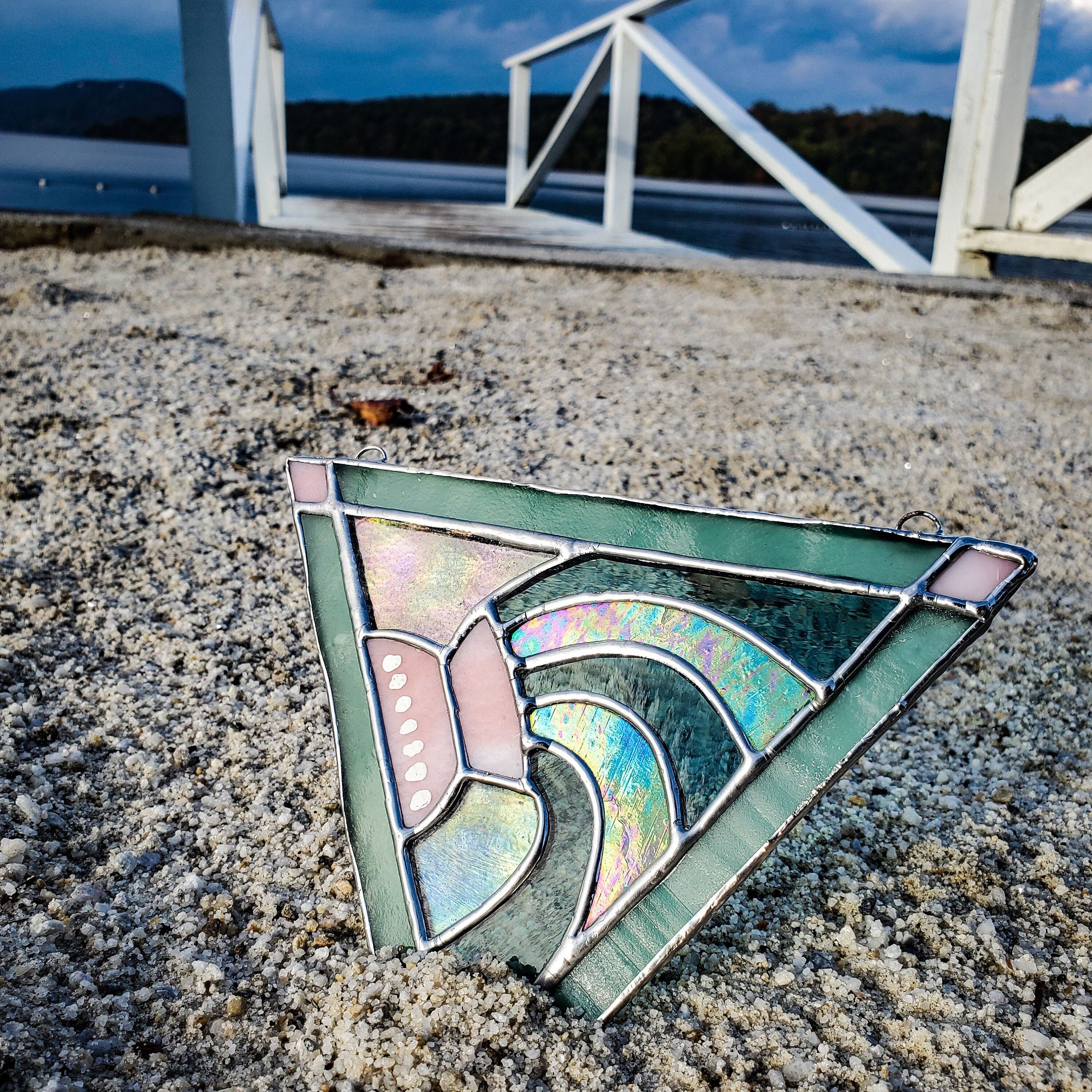

#PAGAN STAINED GLASS DESIGN WINDOWS#
Elsewhere, Judas is seen chained to an island for his sins, a fearful, claw-footed, semi-rotten thing.įearful and claw-footed … Judas depicted in one of Clarke’s windows at Honan Chapel in Cork City. Gobnait – patron saint of bees – is depicted with a “pointed, impassive profile”, as Wilson writes, her “unnaturally long slim hands and geometrically stylised body” giving her “an otherworldly, non-human appearance”. From a distance, the windows seem like standard Victorian stained glass up close, you see how outlandish they are. Rather, it felt like the product of an aesthetic that dragged the decadence of Wilde and Beardsley, via Gustav Klimt’s enamelled strangeness, into the stridency of art deco, only to end up somewhere else entirely, far into a faithless future or deep in the pagan past.Īs Wilson notes in her essay on the chapel in the new book, Clarke was drawing on Celtic and pre-Christian images. It hummed with an eerie power – even the floor was a zodiac mosaic. It was less a place of worship than a spaceship pulsating with an alien vision. She took me to the Honan Chapel, designed in 1916 and part of University College Cork. Visiting Cork, I met Ann Wilson, an art historian, Clarke aficionado and a contributor to the lavish new book Harry Clarke and Artistic Visions of the New Irish State. Only when I made my first visit to Ireland recently were my eyes opened to Clarke’s work. Photograph: courtesy Irish Academic Press Architectural influences were mostly from Roman and Medieval design, with elaborate carved wood and open tracery.Eye opening. The church most heavily influenced gothic design, and this medieval ecclesiastical style shines strongly through. Decorative ribbing or cornices were common and elaborately carved. Obviously stained glass was a significant feature, and these were ideally accented with pewter, wrought iron, suits of armour and candles. Walls were painted in flat colors, to depict stones, and often covered in wall hangings- especially tapestries.

Also popular was trompe-l’oeil architectural features or stenciled designs. Wallpaper was ornate and heavily patterned in natural flowers and foliage. Purple, ruby, black, ochre, forest green and gold added complemented the heavy furniture and rich design. Gothic ColorĬolors were rich and dark, of the Victorian era. Victorian gothic reproduction and Arts and Crafts era furniture can be used as an acceptable alternative, as many of the same motifs crossed over. Old church furniture such as pews, benches and trestle tables finish the look. Chairs, bed frames, cabinets were sturdy and featured arches, spiral-turned legs and rich upholstery in dark colors. Gothic Furnitureįurniture was massive and oak, adorned with Gothic motifs. Light was also important, as windows grew more and more expansive and light and air flooded into the once gloomy churches of the Romanesque period. There was a strong vertical influence, supported by the high arches and peaks of the architecture. Pointed arches and stained glass in complex trefoil or rose designs were predominant, exposed, wooden beams, large, imposing fireplaces, and emulated candle lighting completed the ecclesiastical style. Style had a religious symbolic base- think of old, ornate churches and you will be on the right track.

The new age of soaring cathedrals meant the initiation of new methods of building, to support this extreme weight. Gothic design was the first true ecclesiastical style and was symbolic of the triumph pf the Catholic church over paganism in Europe. Its initial design period was c.1150 to 1550, but saw a revival in the 19th century by the Victorians. Gothic period design was influenced by Roman and Medieval architecture.


 0 kommentar(er)
0 kommentar(er)
